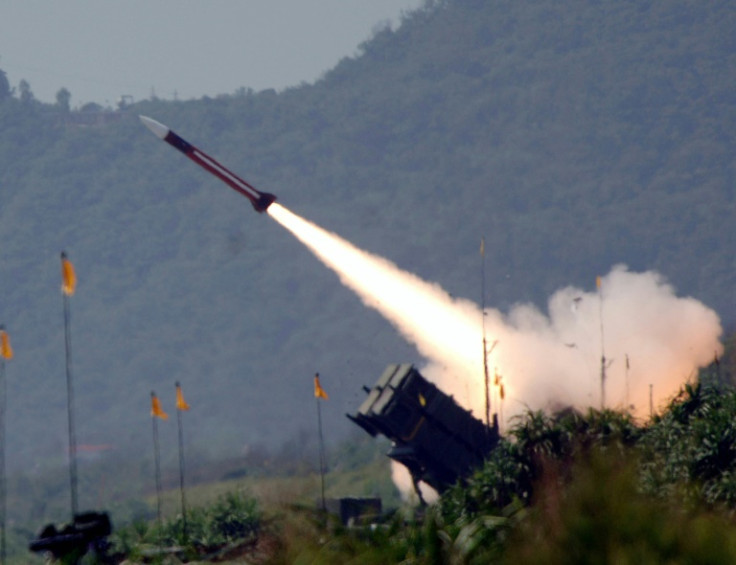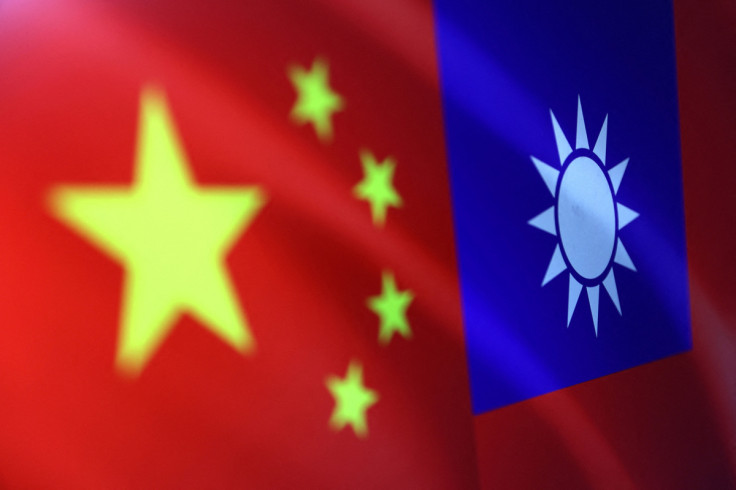US Missile Defense Systems May Not Help Defend Taiwan Against China: Analysts

KEY POINTS
- Analysts downplayed the U.S.-made PAC-3 missile defense system's performance on the Ukrainian battlefield
- Equipping Taiwan with PAC-3 to counter potential Chinese missile strikes may not be cost-efficient, they claim
- A former Taiwanese naval instructor proposed Israel's Iron Dome system as a better option
Taiwan is monitoring the use of more advanced U.S. missile defense systems on the Ukrainian battlefield as it hopes to equip the island with it to counter possible Chinese strikes.
However, several analysts told the South China Morning Post (SCMP) that the U.S.-made Patriot Advanced Capability-3 (PAC-3) missile defense system may not fend off Chinese attacks against Taiwan in a potential cross-strait conflict.
Ukraine reported Tuesday that it intercepted six Russian hypersonic Kinzhal missiles. While Kyiv did not say whether it used the PAC-3 system to intercept the Russian missiles, the U.S. military confirmed that Ukraine had shot down a Kinzhal using the American missile defense system, according to Reuters.
But Song Zhongping, a military analyst and former instructor at China's People's Liberation Army (PLA), expressed skepticism over PAC-3's capabilities.
"Strictly speaking, the air-launched Kinzhal missile couldn't be defined as a hypersonic missile, but more a ballistic missile because its speed drops if it is launched from a fighter jet such as the MiG-31," Zhongping said.
A PLA source, who spoke to the outlet on the condition of anonymity, claimed Ukraine fired at least 36 PAC-3 missiles to bring down just two Kinzhals, which means the U.S. missile system would not be a cost-effective countermeasure for Taiwan.
"With such a low hit rate, how many PAC missiles will Taiwan need to purchase from the US?" the unnamed Chinese military source said, highlighting Beijing's huge missile arsenal.
Zhou Chenming, a researcher at the Beijing-based military science and technology think tank Yuan Wang, also said it would not be cost-efficient for Taiwan to use the PAC-3 system to intercept Chinese missiles, which reportedly cost just a few thousand yuan per shot.
For Taiwan to deal with China's missile threats, the island should source the all-weather Iron Dome air-defense system from Israel, Lu Li-shih, a former instructor at the Taiwanese naval academy in Kaohsiung, said.
Lu claimed Taiwan doesn't have an effective air defense system similar to Israel's Iron Dome, which he said is capable of intercepting both short-range rockets and artillery shells fired by howitzers.
Despite the analysts' bleak assessments of the PAC system's capabilities, Andrei Chang, the editor-in-chief of the Canadian-based military magazine Kanwa Asian Defence, insisted that the U.S. missile system "performed very well" on the Ukrainian battlefield.
Chang noted that the PAC-3 system has been proven effective since the Gulf War, while Russia's Kinzhal missile's weakness "is precisely its high speed."
"The infrared signature of a high-speed, large-scale projectile is very strong, which is very conducive to early detection, allowing the PAC-3 time to shoot it down," Chang said.
Taiwan is currently equipped with the less-advanced PAC-3 variant Cost Reduction Initiative (CRI).
In December 2022, Bloomberg reported, citing a State Department notice it had obtained, the Biden administration proposed an $882 million weapons package for Taiwan, which includes as many as 100 of its most advanced PAC-3 Missile Segment Enhancement (MSE) systems.
The State Department said the proposed sale of more advanced PAC systems would improve Taiwan's missile defense capability and ability to deter Chinese threats.
The Patriot MSE is a "small, highly agile, kinetic kill interceptor for defense against tactical ballistic missiles, cruise missiles and air-breathing threats," Lockheed Martin, one of its developers, said.
The delivery of the PAC-3 MSE systems to Taiwan is expected to take at least four years.

© Copyright IBTimes 2024. All rights reserved.






















